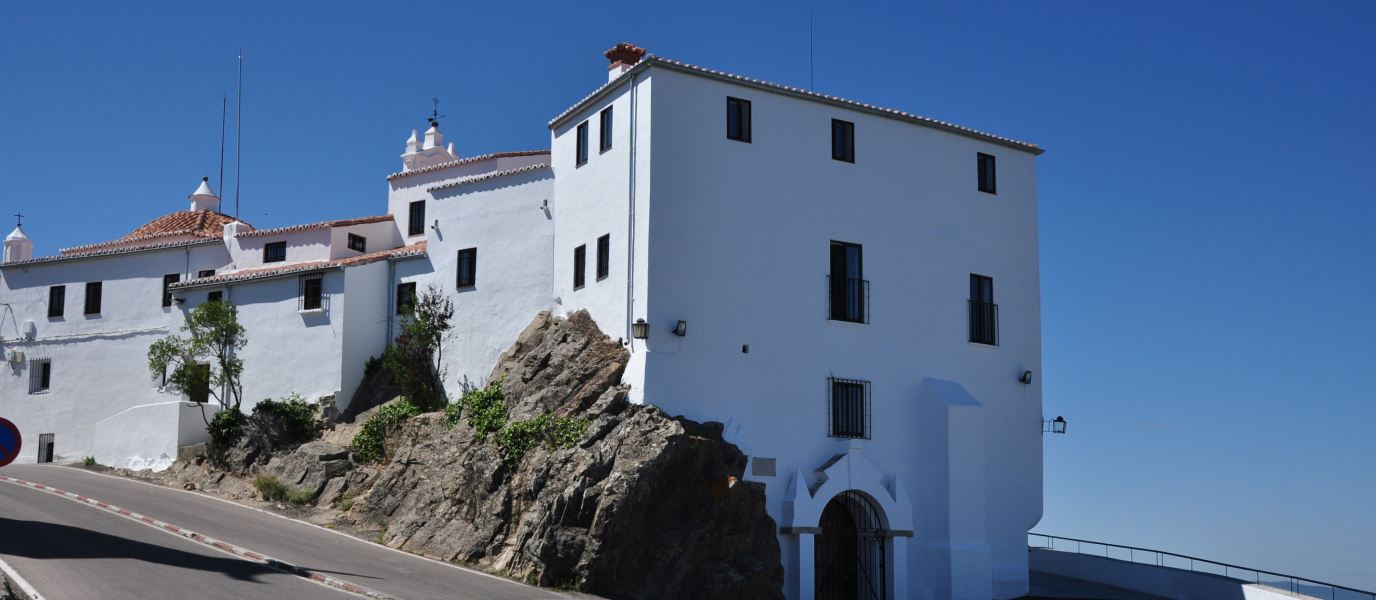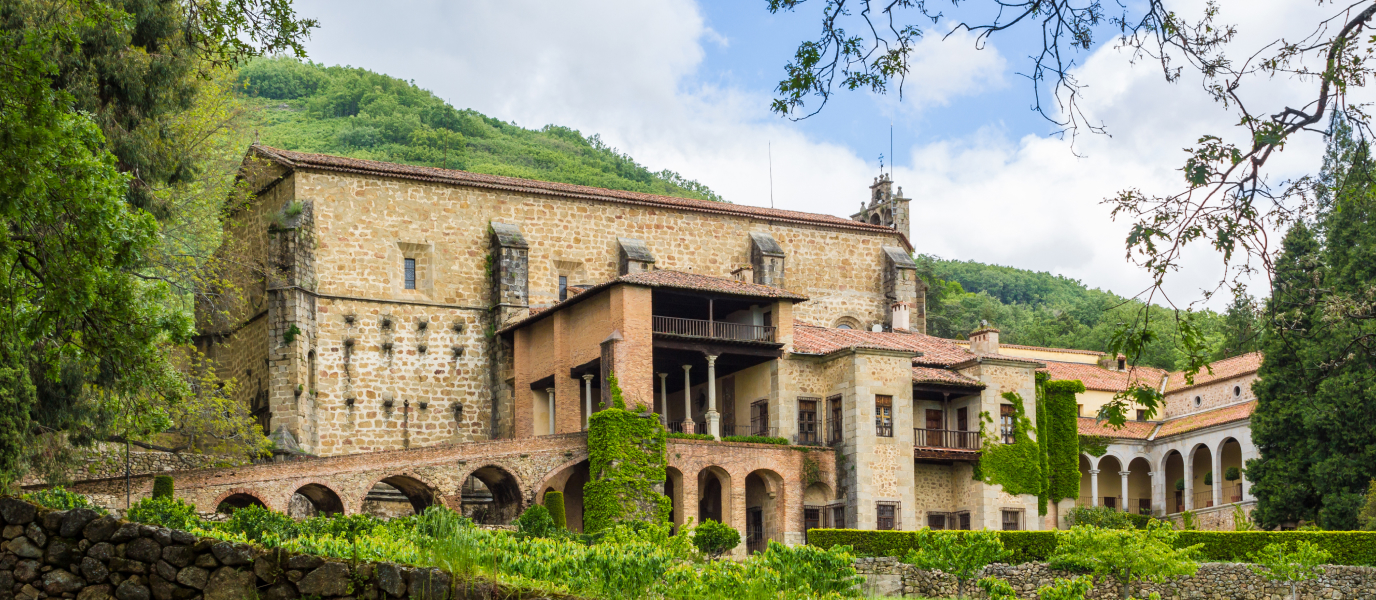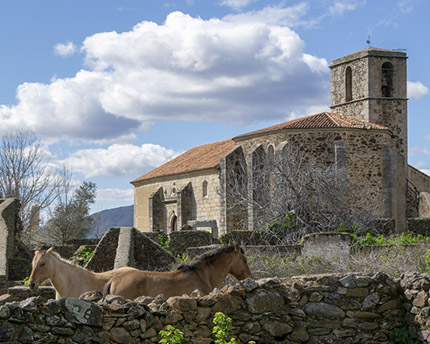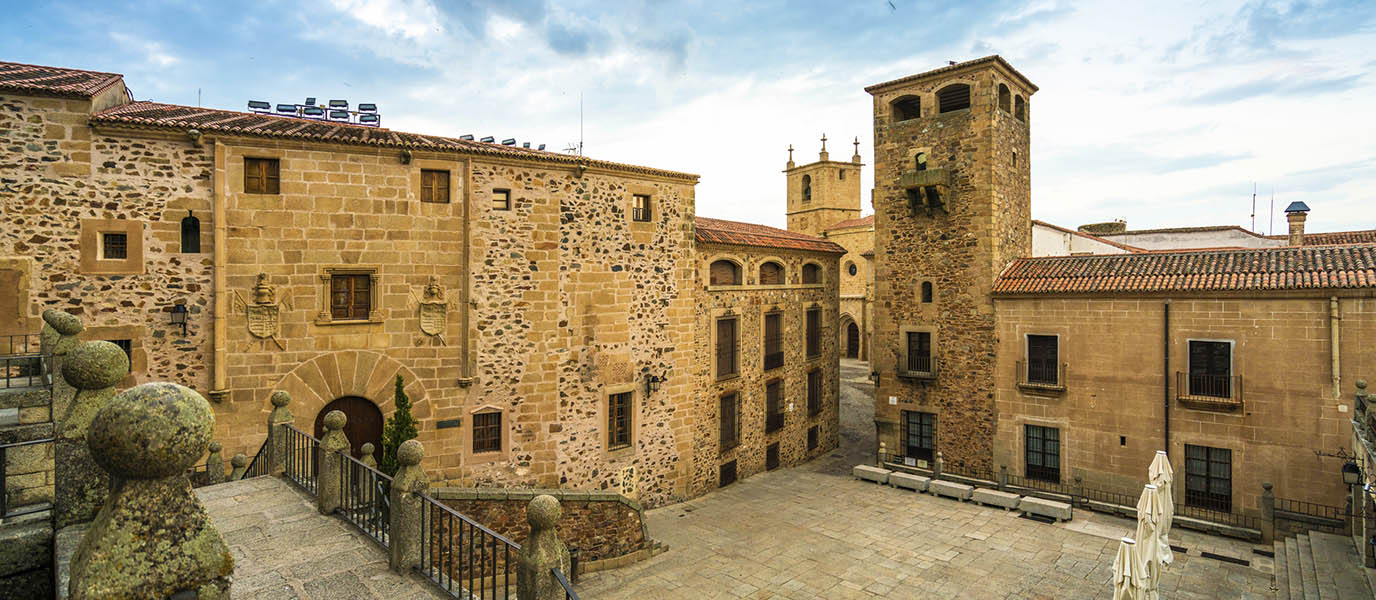Legend tells that a devout pilgrim named Francisco Paniagua (more about him later) travelled more than 40 km with an image of the Virgin Mary around his neck, awaiting a sign from above that would show him where to build a temple in her honour. When no sign came, he retreated to the Sierra de la Mosca where he would establish a beautiful sanctuary overlooking the city.
The sanctuary
The sanctuary is on a hill to the east of Cáceres and affords the best views over the city and the surrounding area. Hence, it attracts those who worship not only God but also a great photo opportunity. You can get there in 15 minutes by car or 50 minutes on foot.
The Santuario de la Virgen de la Montaña, or Sanctuary of the Virgin of the Mountain, stands atop the jagged crest of the Sierra de la Mosca, some 600 metres above sea level. On one side are crags and deep ravines. On the other, the gentle hillside slopes all the way down to the city of Cáceres, peppered with houses and scrub vegetation. The sanctuary was originally dedicated to the Virgen de la Encarnación de Montserrat, on account of the visual similarities between this hill and the Montserrat mountain range in Catalonia.
Today, it’s a place for worship and a popular tourist site. Both the sanctuary itself and the surrounding hills are worth visiting during your trip to Cáceres. They hold such a special place in the local cultural fabric that the names Montaña and María Montaña were very popular in Cáceres during the 1960s and 70s.
The bajada of the Virgen de la Montaña and other celebrations
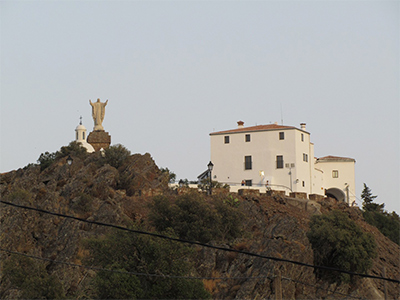
Even before the hermit Francisco Paniagua died in 1636, his sanctuary along with Cáceres Cathedral (link: Cáceres Cathedral) had become focal points for worshippers. Nowadays, thousands of locals still accompany the figure of the Virgin as she is brought down to the cathedral where masses and services are held in her honour and newborn babies are baptised en masse.
During processions such as this one –held annually over nine successive days in late April – the figure is escorted by groups parading with drums as they walk through the city streets which are decorated for the occasion, while onlookers throw flowers from balconies and sing songs.
This special nine-day period is called a novena, and it can be held for other reasons too, among them grieving, retreat, worship or some show of good deeds. Novenas have been held to honour saints and the Virgin Mary, as well as for requesting help with day-to-day matters. During these nine days of reflection, worshippers must observe strict rules and attend regular masses. Since 2018, the novena in honour of the Virgen de la Montaña has been officially recognised as a Festival of Regional Tourism Interest.
An ancient pilgrimage route from Mérida once passed by eight different hermitages and ended here, in the Santuario de la Virgen de la Montaña. Until 1641, local people would go the sanctuary to ask for help. However, when the area was struck by drought, the desperate residents of Cáceres brought the statue of the Virgin down to the cathedral for the first time, where they begged for her protection. The bajada or ‘coming down’ then became an annual tradition
A refuge among caves
In 1621, the pilgrim Francisco Paniagua came to Cáceres from Casas de Millán, just 4 km away. He was waiting for God to show him where to build a church. Along his journey, and after reaching Cáceres, he spent his time begging for money so that he could built the sanctuary, to no avail. Disheartened, he decided to retreat to a rugged yet beautiful place, high above the worldly concerns of the people below. It was there that he decided to build a sanctuary in honour of Mary, whose incarnation would later become known as the Virgen de la Montaña
The hermit’s personal gesture and devotion worked a miracle: the residents of Cáceres were so moved by the pilgrim’s story that they began offering their support in the form of money, jewels or their own bare hands. In 1688, half a century after Paniagua’s death, the local council decreed that the Virgen de la Montaña would be the patron saint of the city, thus rewarding Paniagua posthumously for his labours. In 1906, Pope Pius X officially confirmed the Virgen de la Montaña as a patron saint.
Inside the sanctuary
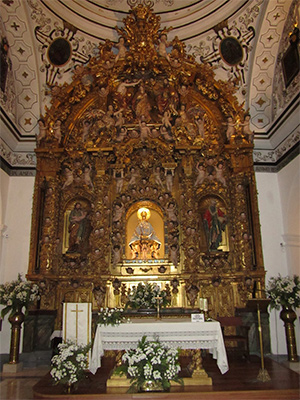
When you make the trip up to the sanctuary, make sure to contemplate the plazas and streets with whitewashed houses, or stop for something to eat in the Mirador de la Montaña restaurant. Above all, take time to go into the sanctuary itself and to visit the cave where it all started.
There’s a 17th-century square with fantastic views of the city, a statue of the Sagrado Corazón de Jesús, or Sacred Heart of Jesus, raised in 1926, and a tiny shrine built in 1703 by order of the brotherhood of the Santuario de la Virgen de la Montaña.
Inside the sanctuary is the very image of the Virgin that the hermit Francisco Paniagua carried on his solo pilgrimage. She may be small, but she’s priceless in the eyes of the city, and she no longer leaves the sanctuary.
The image on the main altar is the one taken down to the city during the novena. She’s a Baroque coloured walnut sculpture made between 1620 and 1626, and she bears some extremely valuable adornments. The golden crown was cast in 1924 for the canonical coronation of the patron saint. It cost 150,000 pesetas at the time, all of which was donated by local people. She also has symbolic precious stones, including rubies for blood, and diamonds for strength and faith. Her cloaks were gifted by various people, among them Queen Isabella II of Spain. The cloak worn by the figure during the 1937 bombings of the city is also still intact.




































































